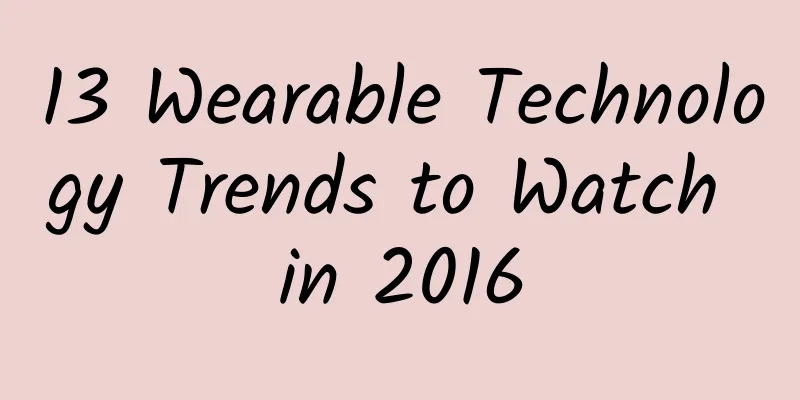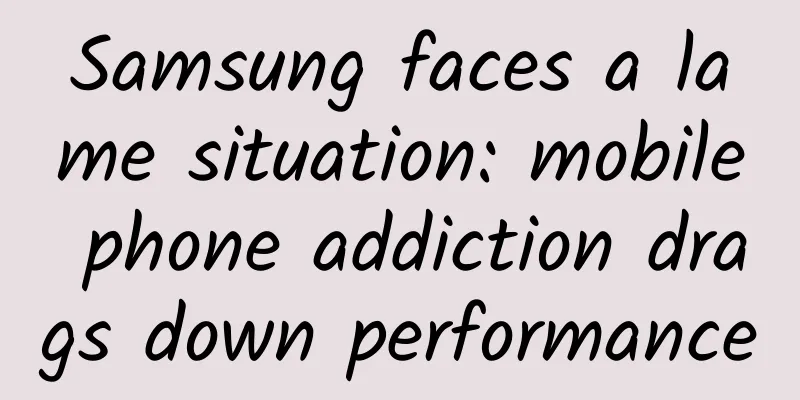13 Wearable Technology Trends to Watch in 2016

|
Apple Watch vs Huawei Watch The Apple Watch has dominated the wearables space in 2015, and that trend is likely to continue in 2016. Fitbit is also likely to maintain its lead in the new year. However, beyond these two almost certain conclusions, the future of dedicated activity trackers, medical and fitness wearables is less clear. We collected opinions from analysts, wearable device manufacturers and other related experts and compiled their views on the technology outlook and 13 development trends worth paying attention to in 2016. 1. The audience size of wearable devices will further expand According to eMarketer, in 2015, 39.5 million adults aged 18 and over in the U.S. owned wearable devices, including smartwatches and fitness trackers—a 57.5% increase from 2014. The growth will continue in 2016, and the research firm says the number will grow to 81.7 million in 2018. 2. Smartwatches won’t take over the space of dedicated fitness trackers Many technology industry observers predict that the Apple Watch "will not eat into the space occupied by fitness bands, despite its hopes," The Wall Street Journal reported in December. Apple has sold about 7.5 million smartwatches in the past two quarters, according to IDC. Fitbit sold 9.2 million in that period, more than double the number of fitness trackers it sold in the same period in 2014. "A lot of people think that multi-function devices will replace these specialized products," said Ramon Llamas, research manager for wearables and mobile phones at IDC. "But I don't think that's going to happen in 2016 or even in the next few years. The two categories are positioned differently and can coexist harmoniously." Consumers appreciate the low price of activity trackers, which typically cost between $100 and $200, Llamas explained. Smartwatches, by contrast, typically cost $300 or more, and most people "don't see the real value in them yet," he noted. "They wonder, 'What can I do with a smartwatch that I can't do with a smartphone?'" 3. Fitbit will remain the king of activity tracking products Fitbit is and will continue to be the king of activity tracker brands, according to the NPD Group's Fall 2015 Consumer and Wearables Report. Fitbit saw a 13% increase in ownership between February and October 2015, and the report also states that "it remains the only activity tracker brand that consumers can name and identify with, regardless of product function or style." 4. Fitbit will face increasing competition IDC estimates that Xiaomi, a Chinese company, will have a 97% share of sales of sports tracking devices in its home market. However, Xiaomi's "Mi Band" is only priced at $15, which is even lower than Fitbit's entry-level Zip product, which is priced at $60. In addition, if Xiaomi can continue to expand beyond its home market after dominating the Chinese market, it is likely to become a formidable rival that Fitbit cannot ignore. Next up is Garmin, another potential competitor to Fitbit that is best known for its portable navigation devices. The company "has built a solid market presence by focusing on addressing the needs of everyday people for activities such as running, golf, swimming, hiking, and water sports," IDC explains. "With such a deep and broad product portfolio at a variety of price points, Garmin is well-positioned to meet the growing demand for consumer fitness tracking solutions through its sub-branded wristbands and watches." Garmin has become a popular choice for athletes. According to a survey released by Piper Jaffray in November 2015, 91 out of 221 American athletes surveyed said they would wear watches during exercise, and 70% of them emphasized that they chose Garmin products. According to this survey, Fitbit continues to be the most popular fitness wristband option, currently occupying 73% of the market share. 5. Fitbit will add "advanced sensors" to maintain its competitive advantage Fitbit CEO James Park recently revealed some details about its future product line in an interview with Time magazine. "We will definitely use more advanced sensor designs in future devices to help users obtain and view more detailed indicators while improving the actual accuracy of the data that can be tracked currently," Park said. "I can't be too specific, but people are definitely excited about the prospect of using such devices to track their blood pressure, mood changes, and even more status data related to sports performance. We are working hard to make all of this happen and will gradually release the results over time." Fitbit also "plans to work with popular brands, and it has already established a partnership with Tory Burch," Park said in an interview. Third-party developers can also integrate their own software into more advanced Fitbit devices in the future. "We will allow third parties to add their own developments in many ways, and they will run on the device that is always on and worn on the user's wrist," Park emphasized. A Fitbit representative also said the company is "looking at key health and wellness metrics, including activity, sleep and nutrition - and linking them to chronic conditions, including diabetes, heart disease and obesity, to help improve the quality of life for people around the world." 6. Wearable applications will become more complex—and costs will continue to rise Software applications provided by fitness device manufacturers and third-party developers for devices will become more advanced, and they will continue to add more and more different functions and features, said Weston Henderek, head of connected intelligence at The NPD Group. "Applications will have more powerful sensor data usage capabilities, and these features based on fitness trackers will help users store information in a cloud environment and provide more relevant suggestions to improve health and fitness." However, in 2016, price competition for fitness trackers will intensify, which means it will be difficult for manufacturers to make profits, Henderek predicted. One way to solve this problem of shrinking profits is to provide premium services and data to subscribers for a monthly fee, he said. Some companies have already chosen this direction. Fitbit's premium membership program charges users an annual fee of $50 and provides subscribers with a 12-week customized health plan, more detailed sleep process reports and other related functions. 7. Hackers will target wearable devices As wearable devices become more popular, hackers will increasingly target them, said Bruce Snell, head of cybersecurity and privacy at Intel Security. Wearable devices typically collect a large amount of simple data and pass it to mobile apps for further processing, he explained. Most of these devices use Bluetooth transmission technology, "which faces a series of well-known security vulnerabilities and is likely to usher in more new vulnerabilities as new versions are released. Bad wearable application code can also introduce dangerous backdoors into smartphones." Snell predicts that a high percentage of wearable devices will be compromised in the next 12 to 18 months, "and these spear-phishing attacks will be able to get valuable data." For example, by collecting GPS data from an app running on a fitness tracker, a spear-phishing attacker will be able to "create an email that the victim is likely to trust and open. If people tend to stop at a certain cafe after a run, an attacker with that GPS data could write in a forged email, 'I think you left this at the cafe this morning,' and attach a compromised image file." About three-quarters of IT professionals surveyed believe that the risk of hackers threatening their businesses through IoT devices, including fitness trackers, is either medium or high, ISACA said in its IT Risk/Reward Barometer study. It is worth noting that IoT devices are often a priority target for fraudsters who are inclined to use ransomware, explained Christos Dimitriadis, ISACA International President and Director of Information Security at Intralot. In 2016, companies "will need to set network management policies to manage the various levels of access for these devices," said Kurt Roemer, chief security strategist at Citrix. "Employees will use a variety of devices that can collect personal data and increase the accuracy of information, and future management must take these variables into account. For industries such as healthcare, where these devices are constantly uploading and sending data, it is important to encrypt the information and use multi-factor authentication protocols to prevent security incidents caused by patients or hackers." 8. Athletes will adopt "smart clothing" in large numbers Wearable fitness devices will generate more than $10 billion in value by 2020, up from $3.3 billion in 2015, a Juniper Research report predicts. “The threefold growth will be driven in large part by wrist-based tracking products, but a significant portion will also come from smart clothing equipped with the latest wearable technologies—products that will be adopted by professional sports teams in large numbers,” the report states. "In addition to the products that are already widely used to monitor performance, smart clothing will become an essential equipment for watching sports events in the future - sports leagues such as the NFL are working with manufacturers such as Microsoft and Zebra Technologies to produce products that can visualize data and find new ways to help viewers quickly understand the situation of the game," said Juniper. Although smart clothing has yet to demonstrate clear value in the consumer market, the trend is worth watching, NPD Group's Henderek stressed. "In professional sports, the ability to track athletes in real time can help coaches realign positions and help players avoid injuries," he explained. "There is a real demand for this data." Some well-known brands have already started to offer “smart clothing” products to consumers. Ralph Lauren’s PoloTech shirt ($300) can measure biometric information such as heart rate, breathing depth and balance, and send the data to the iPhone or Apple Watch app via a “Bluetooth black box” device, the company explained. 9. Sleep will become a focus in 2016 Most high-end sports tracking devices currently measure sleep status in some form, and most of them do it automatically. However, feeding the data collected by the device to a back-end application or website is only the first step in the development of technology, and it can often only provide basic conclusions such as the user's sleep time, the number of times they wake up at night, and the level of deep sleep. As wearables gain more sensors and processing power, they will begin to provide more detailed information about sleep patterns, Henderek predicts. Combining REM sleep, or deep sleep, with information such as heart rate could provide a broader picture, helping users understand how their sleep patterns change over time, he says. There are also a number of new technologies that aim not only to track sleep, but also to improve it: For example, the "unprecedented" Nuyu Sleep System ($500) regulates the user's body temperature and creates a warm atmosphere when they get into bed to speed up relaxation, then gradually lowers the temperature to improve sleep quality, the company explains. 10. Niche wearables will become widespread More wearable devices with built-in sensors for specific purposes will appear in large numbers in 2016. As a typical example, the Neatamo June bracelet ($129) is specifically for female users. It can measure the current sunlight intensity and provide users with sunscreen through an app to prevent skin damage by strong infrared rays. "This is a real and effective product and it will reduce the incidence of melanin worldwide," said Roozbeh Jafari, IEEE member and associate professor at Texas A&M University. "In addition, it looks very fashionable, which is very important in its target market." 11. Exercise tracking devices remind more people to exercise more If an Apple Watch user sits for more than 50 minutes while wearing the device, the watch will vibrate to remind the owner to stand up and move around. (Of course, users can also set the feature to be silent or even disabled.) Some dedicated fitness trackers also have similar functions, including Garmin's vivosmart HR (priced at $150), and more wearable technology and fitness tracking products will help people improve their health through exercise in 2016, Henderek said. 12. Traditional watch phones will introduce "smart" elements In 2015, a new category of watches emerged, dubbed "connected timepieces," and products are popping up all the time. These gadgets are traditional watches with some added technology, such as the ability to receive notifications from a smartphone and track its movements. Available options include Timex's Metropolitan+, which starts at $125, and the Guess Connect, which costs about $400. In 2016, more watchmakers will join the fray with these hybrid devices, Henderek predicts. 13. Wearables of the future will lose their wearability It may not happen in 2016, but eventually wearables will give way to implants, says Liz Dickinson, CEO of wearables maker Mio Global. Today’s wearables “are traditional technology efforts, and the ultimate goal is to put computing mechanisms directly into the body and make sure they work,” she says. “In the future, we will become connected devices, and our internal environment will be adjusted by new devices to automatically help us achieve better physical, emotional and health conditions.” Original link: Original title: 13 wearable tech trends to watch in 2016 [Exclusively translated by 51CTO.com. Please indicate the source when reprinting on partner sites.] |
<<: Google confirms next version of Android will no longer use Oracle's proprietary Java API
>>: Review of the ten major events in China's Internet development in 2015
Recommend
A complete set of APP message push mechanism!
How does the app implement a push mechanism? Whic...
NetEase Cloud Music Product Analysis: The Product Logic Behind the Drastic Increase in Data
NetEase Cloud Music was launched in April 2013, a...
How to follow mini programs on WeChat? Where are WeChat’s mini-apps?
Nowadays, the application scope of mini programs ...
Essential knowledge for APP mobile search promotion, practical introduction of Baidu Chunhua!
Baidu's APP promotion is mainly divided into ...
Apple is asking you to replace the screen or hard drive. Check if your device is in the range.
Apple's repair plan has been updated again, a...
Apple starts cleaning up zombie apps from the App Store!
Before the official version of iOS 10 was release...
How to cook a chicken with bare hands? Beat the chicken for 13 hours and 37 minutes
As a good friend of mankind, chickens are of grea...
Magical kitchen waste degradation black technology
This is what you have seen in kitchen waste... Su...
Stone can be drawn into silk to make clothes? This kind of stone can be found on Earth and on the Moon!
The clothes we wear are basically made of cotton,...
How to fix PC game lag issues? Try these tips
Many friends like to play games on their computer...
91 Ten Articles: China's car exports to Australia soared, Skyworth said it would invest another 30 billion to build cars
1. Changan Automobile plans to increase its layou...
Something big happened today!
Two years ago, on July 23, 2020, the Long March 5...
Knowing that immortality was impossible, why were ancient people still obsessed with "elixirs"?
This article is about 4170 words Reading time: 11...
How well can materials perform when they are “freed” from gravity and are evenly heated and solidified?
Produced by: Science Popularization China Author:...
Google launches startup accelerator to help startups develop mobile products
According to foreign media VentureBeat, Google ha...









